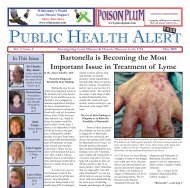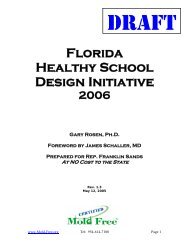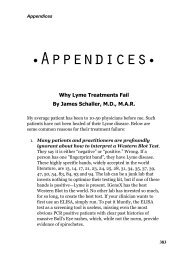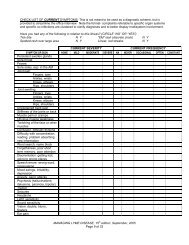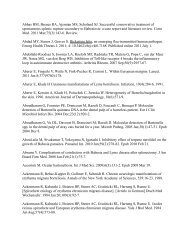Download Here - James L. Schaller, M.D., M.A.R., P.C
Download Here - James L. Schaller, M.D., M.A.R., P.C
Download Here - James L. Schaller, M.D., M.A.R., P.C
Create successful ePaper yourself
Turn your PDF publications into a flip-book with our unique Google optimized e-Paper software.
Environmentally Friendly Mold Remediation Techniques That Significantly Reduce Childhood Asthma5. CommunicationWhen a mold problem is perceived as a potential health threat (particularlyto children), it is predictable that people may become distrustful, anxious,and even openly hostile. This is especially true when occupants feel thatappropriate actions and safeguards are not being taken, information isbeing withheld from them, or that their concerns are not being takenseriously. To manage expectations and prevent unnecessary anxiety, itis essential to effectively deliver complete and accurate information aboutthe nature of the problem and the proposed response.When mold problems are small and will likely be corrected through routinecustodial practices, extensive communication efforts are often not necessary.However, due to the widespread attention recently given to mold, keystakeholders should be informed early whenever water leaks, mold growth,or unusual complaints that could signal mold contamination are noticed.When mold contamination is extensive, or health concerns have beenraised, or when remediation will disrupt normal operations, a formalcommunications strategy should be developed and followed. In allsuch cases it is critical to be open, honest, and direct.The following are communication priorities:1. Demonstrate that occupants’ health and safety are of utmostconcern and how potential risks will be minimized by usingGreen Building compliant and established EPA or OSHArecommended protocols;2. Supply appropriate details of project goals, findings, andactivities; and3. Provide a mechanism for open, ongoing two-way dialogue with affectedgroups or individuals that includes a means for occupants to share theirobservations and theories about problems and potential patterns.Several forms to aid internal communication can be found inAppendix C.51





